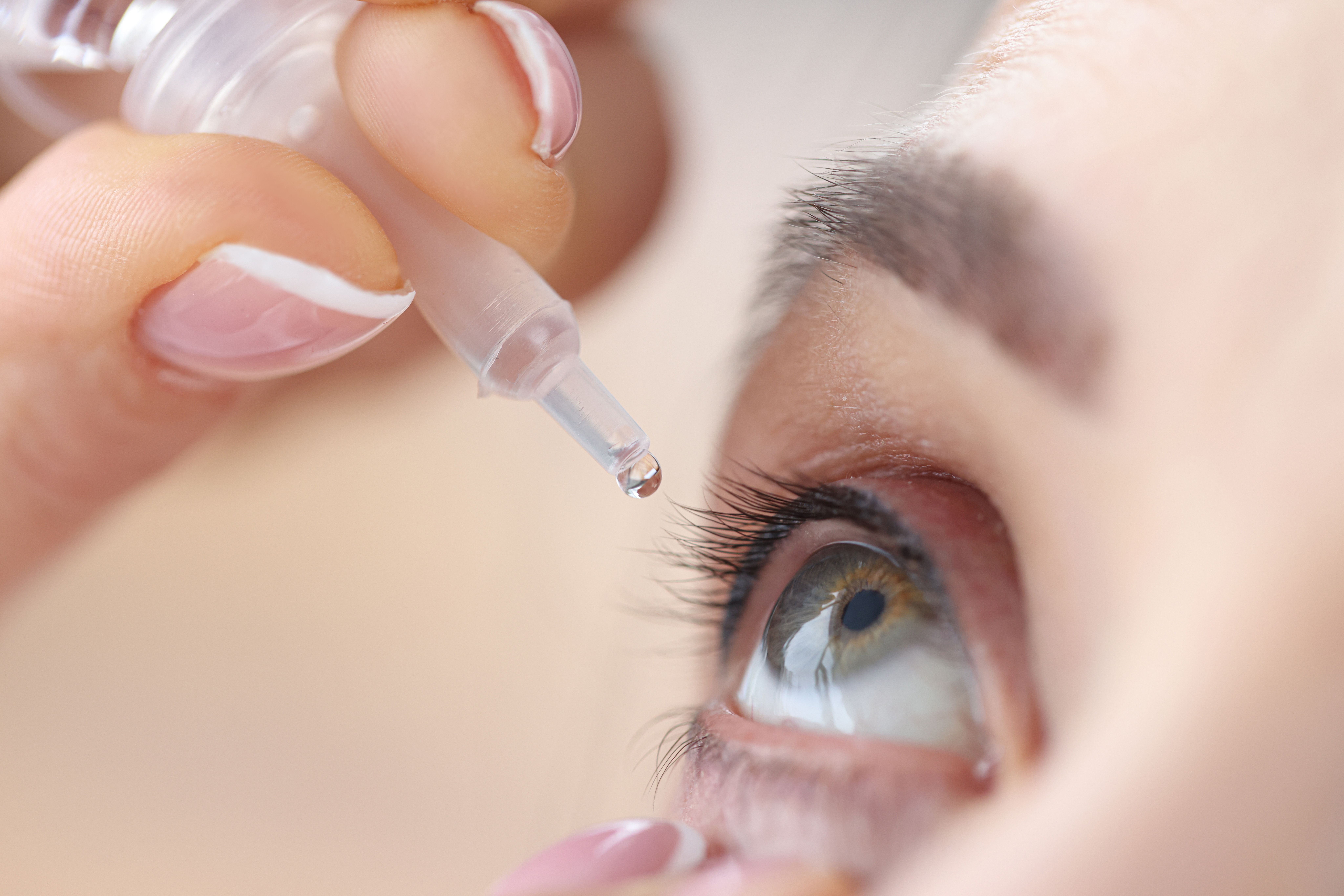What’s new in glaucoma medications

Benjamin Gaddie, OD, FAAO, kicked off his lecture on new glaucoma drugs by stating that eye care providers haven’t seen a new mechanistic class of glaucoma medications introduced to the market since 1996. The lecture took place at Vision Expo East 2021 in Orlando, Florida.
“We have had combination drugs such as Simbrinza (brinzolamide/brimonidine tartrate, Alcon) and Vyzulta (latanoprostene bunod, Bausch + Lomb),” he says. “The first new class is Rho kinase inhibitors.”
Following are highlights from his lecture.
Related: Tips for optimal management of glaucoma suspects
Prostaglandins
Prostaglandins such as latanoprost are lipid family receptors. About 70% of the market is generic latanoprost, says Gaddie. Note that the teal bottle top denotes the drug inside is a prostaglandin.
“My goal today is not to put anybody on eye drops,” Gaddie says. “They look like hell, and we have to deal with prior authorizations. I would love to keep people off drops. Injectables and lasers are options to look at.”
Latanoprostene bunod is considered a prostaglandin because the FDA did not designate it as a new class, Gaddie says. The drug releases nitric oxide is released, and it is used to treat heart disease and erectile dysfunction (Viagra, sildenafil citrate; Pfizer).
“It relaxes smooth muscle contraction like the heart or trabecular meshwork,” Gaddie says.
Related: 5 glaucoma management myths
About 90% of all glaucoma patients presents with an intraocular pressure (IOP) under 15 mm Hg.
“Instead of adding something,” he says, “switch within that class to obtain lower pressure. A 25 to 30% reduction is the goal for most patients because that is what prostaglandins give you.”
He says that the lower the IOP when treatment starts, the harder it is to lower IOP. Plus, Vyzulta is the first drug to be approved to lower IOP, not reduce elevated IOP.
Gaddie says the retinal nerve fiber layer (RNFL) plays a role in glaucoma.
“If the RNFL is lower than 70 µm, somebody needs to convince me it’s not glaucoma,” he says. “I used to diagnose glaucoma based on ganglion cell complex (GCC). Today, I do the direct opposite. I want to see some type of matching pattern between the GCC and the RNFL. Loss on the temporal side of the macula is telling you that even if the patient doesn’t have glaucoma now, they will.”
Related: OCT in glaucoma management: Green isn’t always clean
ROCKs
Rho kinase inhibitors, or ROCKs, target the trabecular meshwork. Two drugs in this category are Rhopressa (netarsudil, Aerie Pharmaceuticals) and Rocklatan (netarsudil and latanoprost, Aerie Pharmaceuticals).
Netarsudil is not as effective as latanoprost, Gaddie says.
“When it is tolerated, it’s a great drug. I get at least 4 mm Hg of IOP reduction.”
The challenge with ROCKs is adverse events, he says. About 54% of patients experience conjunctival hyperemia. Another event is corneal verticillata, caused by an increase in phospholipids, which is reversible upon drug discontinuation.
“A big one for me is blurred vision,” says Gaddie. “I think 10% of patients have blurry vision, and their visual acuity is affected by at least 1 line, maybe 2.”
Rocklatan offers 4 mechanisms of action with once-daily dosing.
“If you haven’t experienced this agent, I suggest you give it a look,” he says.
Cash pay and compounding pharmacies
Eye care providers understand that patient adherence to medication may depend on cost. Some patients’ medical plans require that patients meet the full deductible prior to prescription benefit coverage.
A cash pay option from manufacturers may help, says Gaddie.
“The first glaucoma option for cash pay is Xelpros (latanoprost) from Sun Pharma,” he says. “It’s a branded drug without benzalkonium chloride (BAK) preservative—it uses potassium sorbate, which burns on instillation. It costs $55 for 1 month or $110 for 3 months, and patients are happy with it.”
A similar option is available for Travatan Z (travoprost) from Novartis. Pricing is $55 for 1 month or $135 for 3 months.
“These options work for Medicare patients because it’s all cash,” says Gaddie.
Compounding pharmacies are another option to help patients with glaucoma save costs on medications.
“Before dropless surgery came into vogue, I used compounding pharmacies to put all 3 medications—nonsteroidal anti-inflammatory (NSAID), antibiotic, and glaucoma—into the same bottle,” he says. “Anything you can think of, pharmacies can compound it into a drop. But the insurance coverage can get messy.”
However, he cautions practitioners on the use of compounded drugs for chronic diseases.
He says: “Drugs have different pH, some are suspensions…how do they live together in the same bottle? Little data supports efficacy, and pharmacies will not start making the compound until the patient pays for it.”
Looking ahead
No one knows what the next new glaucoma drug will be, Gaddie says. Adherence improvement will be a big part of innovation in glaucoma treatment.
One potential treatment in phase 2 trials is a drug-eluting contact lens for the treatment of glaucoma, dry eye, and ocular allergy. Patients wear the lens for 5 days, then remove. This product is made by MediPrint Ophthalmics, formerly Leo Lens Pharma.
“How many glaucoma patients will want to wear a contact lens unless they already do?” says Gaddie.
Newsletter
Want more insights like this? Subscribe to Optometry Times and get clinical pearls and practice tips delivered straight to your inbox.